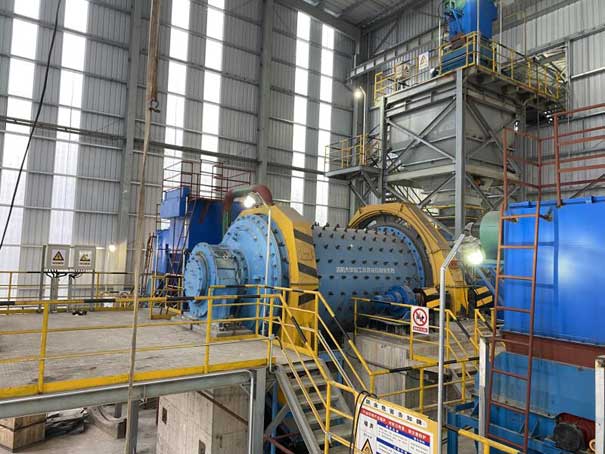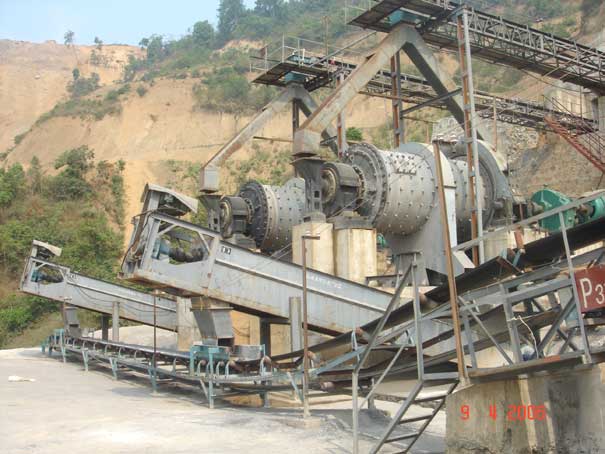Rod mill, also known as rod mill sand making machine, is one of the common sand making equipment. Mainly used for processing and crushing feldspar, river rock and other ore materials. The cylinder rotates at a certain speed, and the grinding body rises to a certain height, and is thrown out under the action of friction and centrifugal force. The material is impacted and ground to achieve the purpose of sand making. The rod mill sand making machine has a wide range of uses. It is a practical and reliable sand and gravel machine. It is the most widely used construction sand in the sand and gravel industry. The use of the rod mill sand making machine:
1. In the gravity separation or magnetic separation plant of tungsten tin ore and other rare metal ores, rod mills are often used in order to prevent the harm caused by over-crushing;
2. When the two-stage grinding process is used, if the first stage is grinding from 20-6 mm to 3-1 mm, when the rod mill is used as the first-stage grinding equipment, the production capacity and efficiency are higher. Because the rod load of a certain weight has a much smaller surface area than the ball load of the same weight, the productivity and efficiency of the rod mill are lower than that of the ball mill in the second stage of fine grinding;
3. In some cases, it can replace the short head cone crusher for fine crushing. When processing soft or not too hard ores (especially viscous ores), using rod mills to grind 19-25 mm (or even 32 mm) ores to 6-10 mesh, it is better than using short-head cone crushing ore. When the machine and the screen are in a closed circuit, the configuration is simple, the cost is also low, and the dust removal in the crushing workshop can be simplified. For hard ore, it may be more economical to use a short-head cone crusher and a sieve to form a closed circuit. Whether to choose a ball mill or a rod mill in the design, it must be determined according to the specific situation to make a plan and compare.
Capacity comparison of ball mill and rod mill:
Ball mills and rod mills are both important mining mills. Their production capacity is related to the following factors: the grind ability of the ore, the particle size of the ore and the final product, the type and size of the mill, the shape of the liner, the shape, size, ratio, hardness and density of the grinding medium, the working speed of the mill, the filling rate of the grinding medium, the grinding concentration, the amount of returned sand and the working efficiency of the grading equipment. Since there are many factors that affect the production capacity of the grinding machine, and the changes are large, there is no theoretical formula for accurately calculating the production capacity of the grinding machine. Therefore, the production capacity of the grinding machine is generally calculated based on an empirical formula and an approximate method. There are two commonly used calculation methods: the calculation method of the unit production capacity of the ore mill (also called the volume calculation method) and the calculation method of the grinding power.
Working principle of rod mill sand making machine:
The rod mill sand making machine is driven by a motor through a reducer and a large gear, or by a low-speed synchronous motor directly through a large gear, to drive the cylinder to rotate. The cylinder body is equipped with advanced and reasonable grinding media-steel rods. Under the action of centrifugal force and friction, the grinding media will fall down after being raised to a certain height. The ground material continuously enters the cylinder from the feeding port and is ground by the moving grinding medium. The finished material is discharged out of the machine through the power of overflow and continuous feeding, and the next process is carried out.
The rod mill is composed of a feeding part, a discharging part, a rotating part, a transmission part (reducer, small transmission gear, motor, electric control) and other main parts. The hollow shaft is made of cast steel, and the inner lining is removable. The large rotary gear is processed by casting gear hobbing. The cylinder body is inlaid with a wear-resistant liner, which has good wear resistance. The machine runs smoothly and works reliably.



